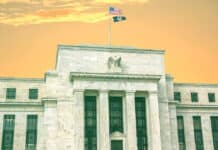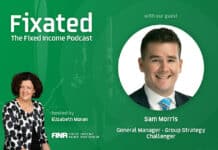
-
Goldilocks is back in fixed income
-
Monetary policy divergence
-
No irrational exuberance among investors
The surprising comeback of Goldilocks. It probably has not felt that way at times, given the substantial macro volatility and the elevated policy uncertainty, but 2025 has been another Goldilocks vintage for global fixed income. Hence, the remarkable performance year-to-date across many indices. The simple definition of a Goldilocks macro regime is that spread compression and rate compression both contribute to driving positive returns, which is exactly what has happened since January. For those who are keeping scores, 2024 was not a Goldilocks year for fixed income as spread compression was offset by a rate increase. 2023 was a Goldilocks year, however. Anyway, coming back to 2025, take global credit, for instance. So far, the global credit index has returned an impressive 9.6%, which has been the result of some credit spread tightening (10bp) but more importantly some major underlying rate decline (36bp). Emerging markets have been roaring, especially EM local currency debt, whose ytd return now approaches 20%. Meanwhile, EM hard-currency sovereign performance has also been quite robust, with a return of about 13%. Even though the US has been a significant source of macro risks in 2025, most of the US fixed income indices have fared quite well. Starting with US credit, which can boast a ytd performance of 7.3%. To be clear, duration has done the heavy lifting, with the US Treasury index returning 6%. The only main region where Goldilocks has been absent is Europe, which has moved on to display the return characteristics of the recovery regime. Under the latter, the duration backdrop is a detractor, as rates tend to rise. And indeed, the Bund index has produced a negative return so far this year, compliments of the stronger growth outlook and Germany’s fiscal bazooka. EUR credit spreads have continued to be well behaved, but with the duration headwind, the European indices have underperformed their peers. For instance, EUR IG has returned 3.5% so far this year, while the EUR Agg’s performance has been just 1.6%. Looking ahead, are we going to see another Goldilocks regime in 2026 for the second year in a row in the US? We believe if we do, it would probably be a tamed version of Goldilocks. The other two realistic macro regime candidates would be recovery (rates higher, spreads lower) and traditional risk-off (rates lower, spreads higher), two regimes that tend to produce more moderate returns, although this is of course conditioned up the relative magnitude of spread and rate moves. While fixed income has had a fantastic run, we believe it would be highly surprising if next year’s performance were going to match that of 2025. It does not mean that fixed income becomes irrelevant. Quite the contrary, in fact. Fixed income is back as an attractive de-risking asset class that provides portfolio diversification and risk management qualities in the face of elevated equity valuation risk.
Mind the monetary gap. Even though the Fed expressed some policy caution at last week’s FOMC along with delivering a rate cut, the reality is that we are still facing some significant monetary policy divergence. This is particularly true between the Fed and the ECB. At this juncture, the market is pricing in almost four rate cuts over the next 12 months in the US against virtually none for the Eurozone. While it is legitimate to question whether the Fed will actually ease as much as priced in, the monetary policy outlook nonetheless suggests it is probably more reasonable to be bullish duration in the US than in Europe. This is simply because the ECB appears to have reached its final destination, ie its neutral rate of around 2%, whereas the Fed still has ways to go, based on an estimate of the Fed’s neutral rate of about 3%. That policy divergence is important. This is one of the key components of the macro differentiation we are observing at the global level. This in turn may create attractive investment opportunities for an active asset manager with a global mandate.
No signs of excessive investor euphoria. The question of whether we are facing a market bubble in the US equity market is clearly a hot topic these days. It is fair to say that some of the traditional market valuation metrics look rather stretched. And yet, there is no sign of investor excess, which is a positive sign. In particular, when looking at the indicators produced by the American Association of Individual Investors, which tracks investor sentiment over the next 6 months, the current reading looks fairly neutral. It is interesting to note that when the AAII reading reaches extremes, it tends to work well as a contrarian indicator, but we are far from that for now. Elsewhere, the excellent work done by BofA also suggests that while investors are quite bullish, the level of bullishness is nowhere close to be concerning. For instance, BofA’s bull and bear indicator is still in moderately bullish territory, well short of the extreme bullishness level that would trigger a sell signal. Likewise, the BofA’s Fund Manager Survey also underscores that global investors have turned more bullish but not to an extent that stands out historically. Overall, we believe the signals remain supportive of risky assets from the standpoint of investor sentiment.

































